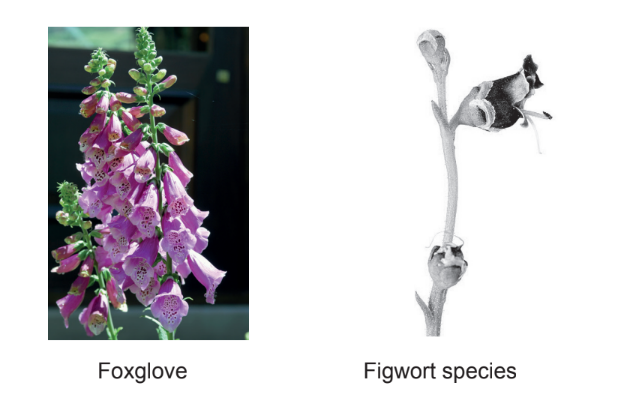Question
The foxglove, Digitalis purpurea, was once classified in the figwort family. The figwort family has been reclassified and is now much smaller.

Why were species such as the foxglove moved into other families?
A. The appearance was too dissimilar.
B. The plants are found in different locations.
C. The genera were different.
D. The DNA sequences indicated different ancestry.
Answer/Explanation
Ans:D
Question
The diagram shows features of three plant phyla.
Answer/Explanation
Ans: D
Question
An organism has the following characteristics:
single opening for ingestion and egestion
radial symmetry
tentacles with stinging cells.
In what phylum would it most likely be classified?
Annelida
Cnidaria
Platyhelminthes
Porifera
Answer/Explanation
Ans: B
Question
An animal has the following characteristics: bilateral symmetry, mouth but no anus, ribbon shape. Which phylum does the animal belong to?
A Mollusca
B Cnidaria
C Annelida
D Platyhelmintha
Answer/Explanation
Ans: D